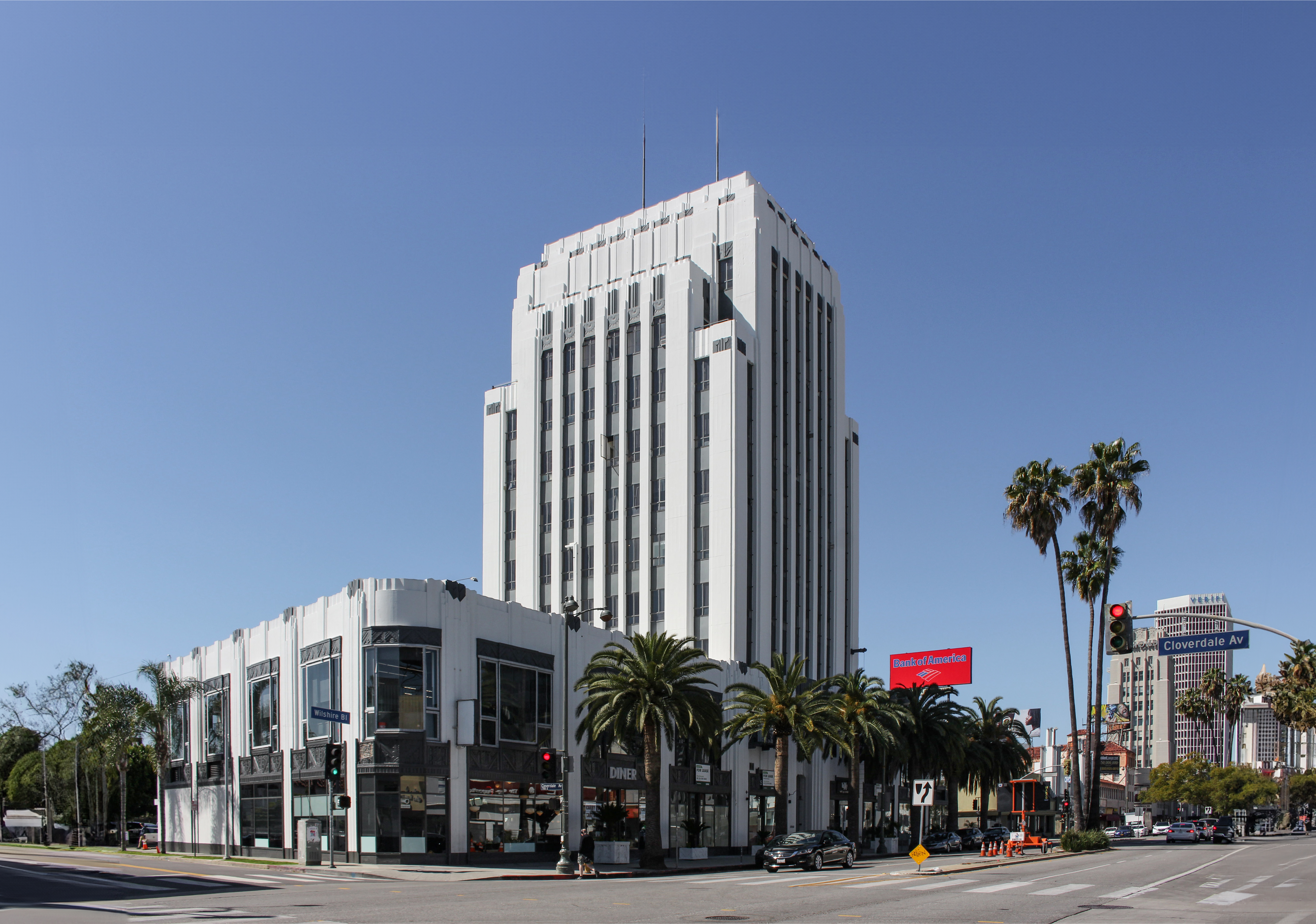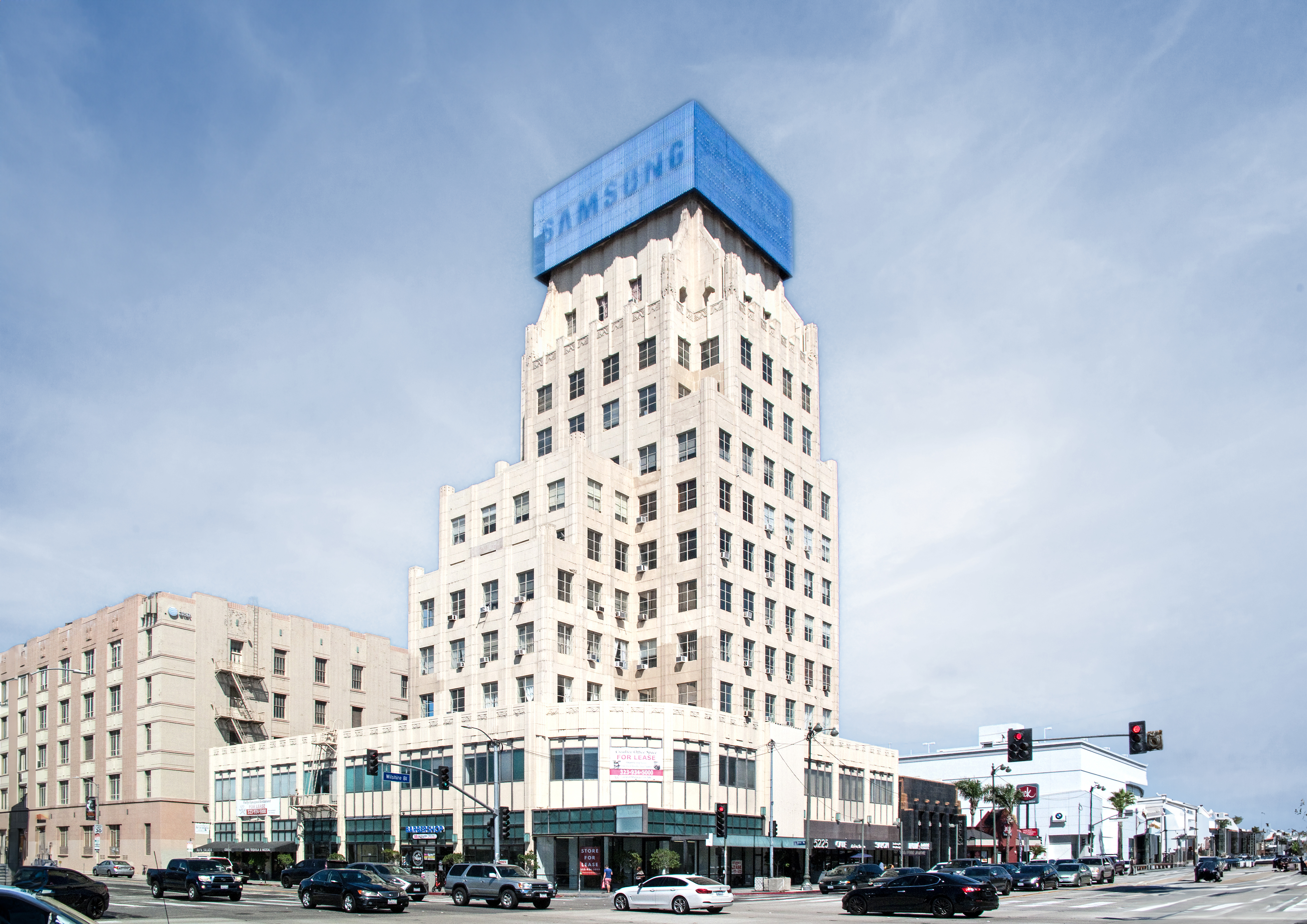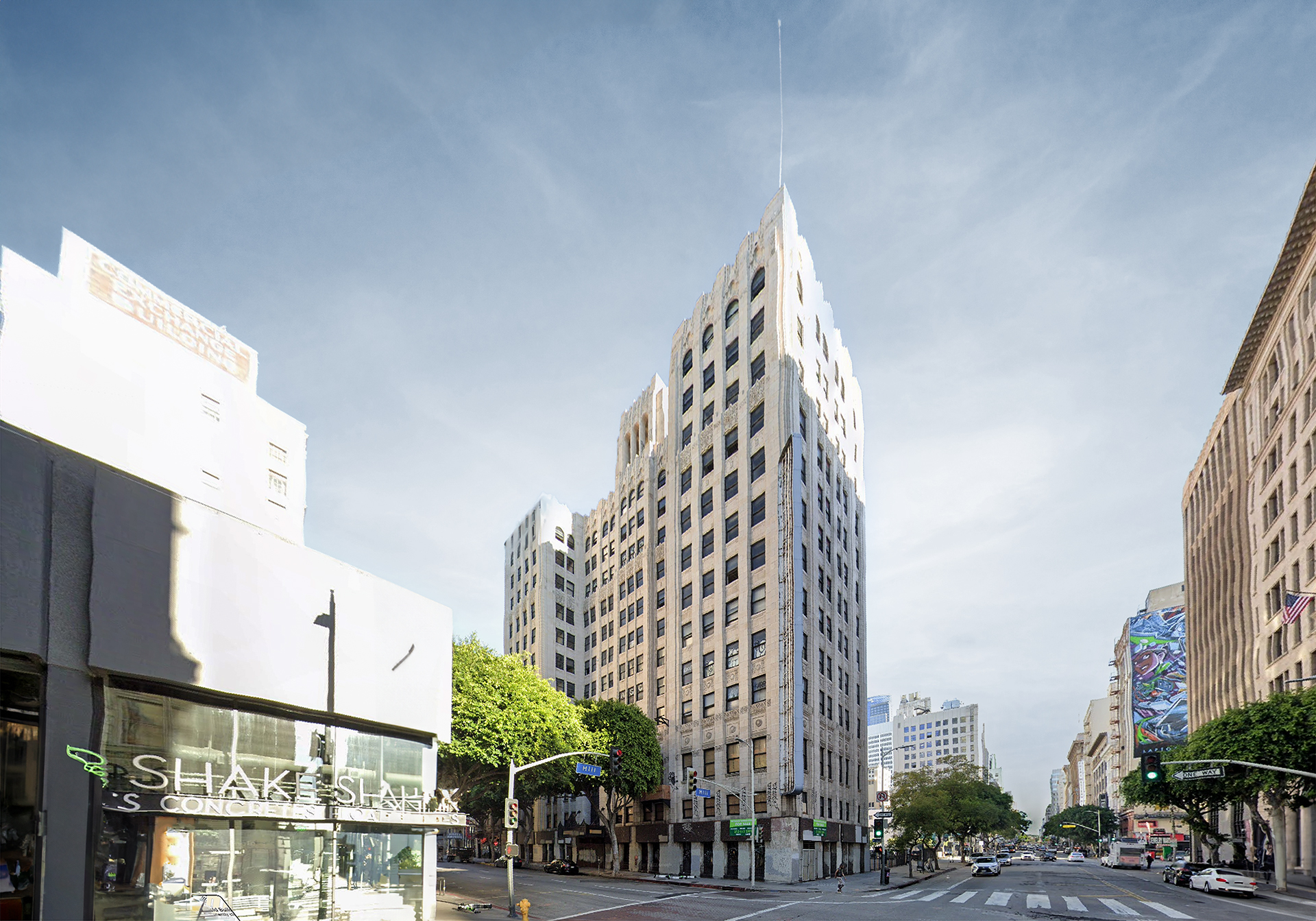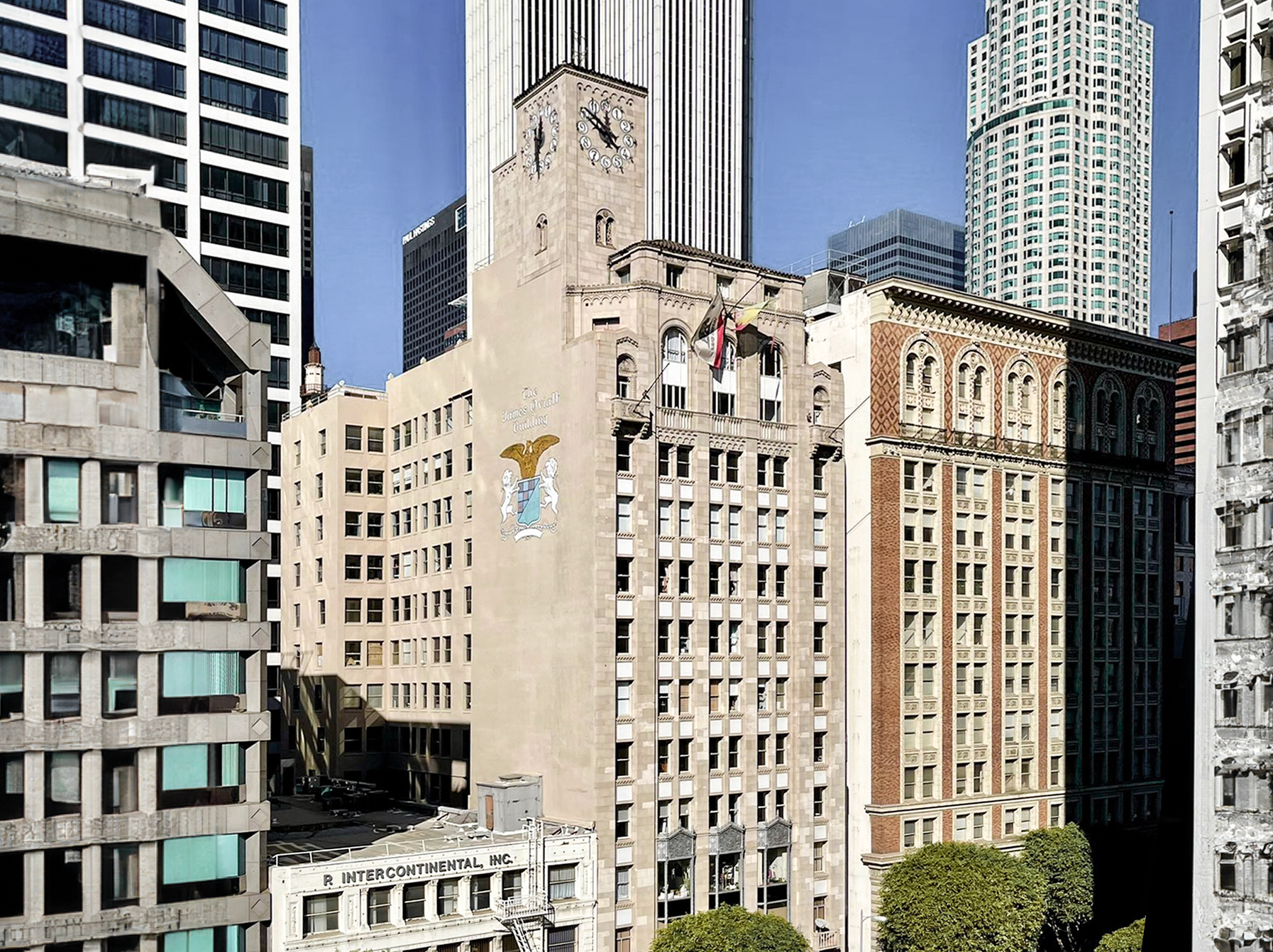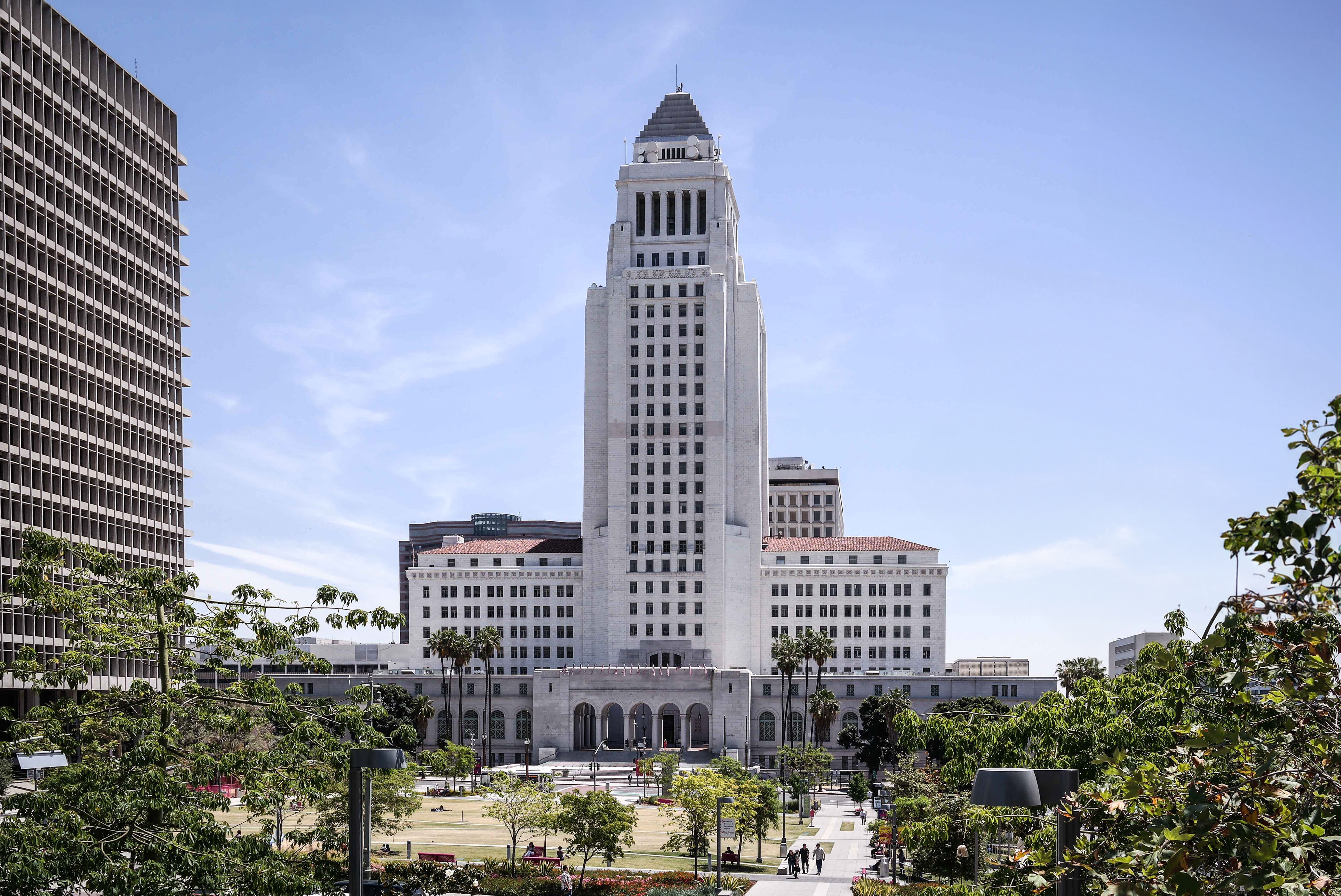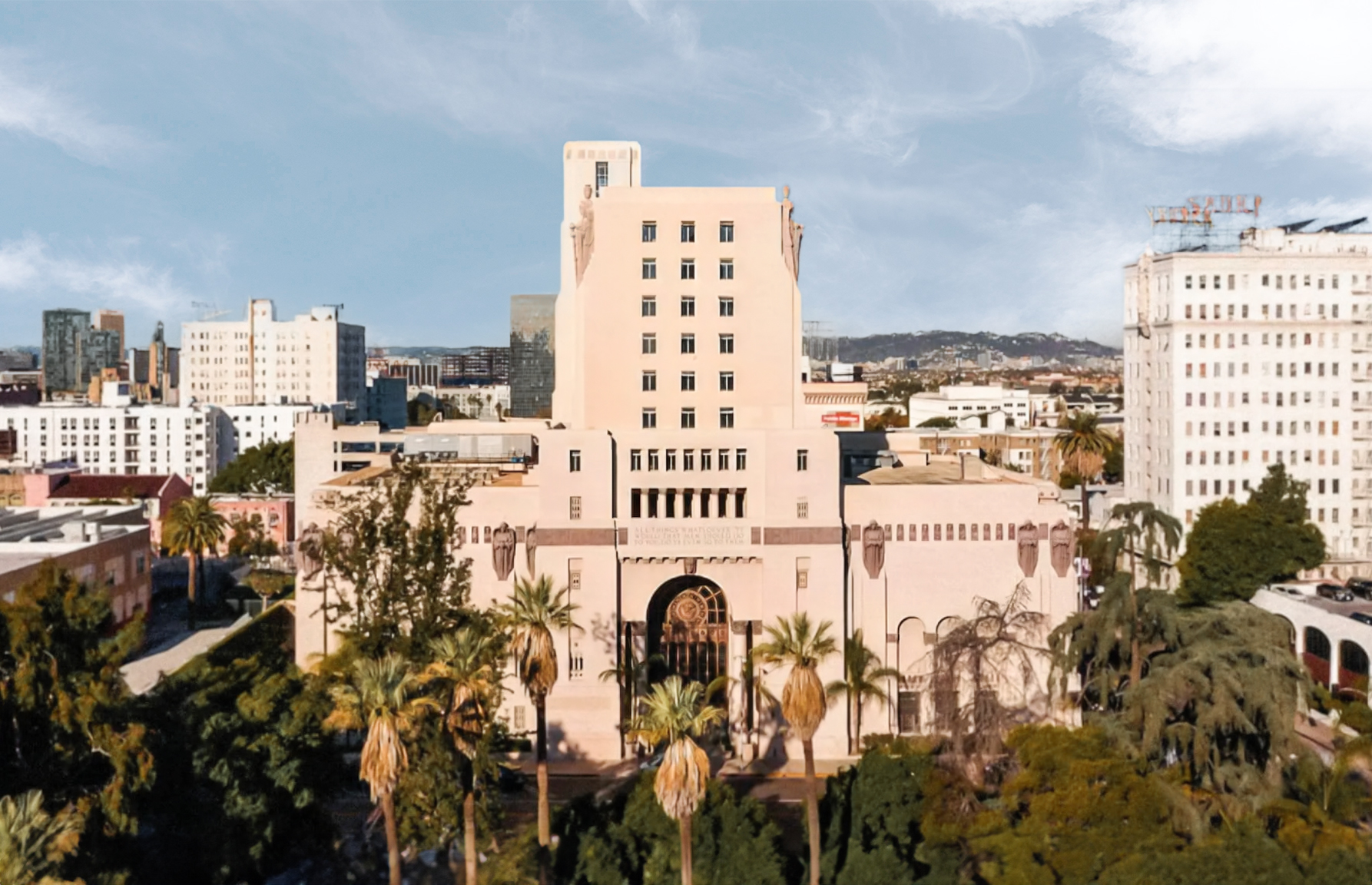The Eastern Columbia Building is an Art-deco skyscraper designed by Curlett & Beelman, and built between 1930 and 1930, for a reported $1.25 million dollars, in Los Angeles, CA.
Eastern Columbia Building is not the only name you might know this building by though. The building is, or has also been known as Eastern Columbia Lofts.
Its precise street address is 849 S. Broadway, Los Angeles, CA. You can also find it on the map here.
The Eastern Columbia Building is a structure of significant importance both for the city of Los Angeles and the United States as a nation. The building embodies the distinctive characteristic features of the time in which it was built and the Art Deco style. Because of that, the Eastern Columbia Building was officially included in the Los Angeles Register of Historic Places in 1985.
The building underwent a major restoration between 2004 and 2006. The architect commissioned to undertake this restoration was Killefer Flammang Architects.

